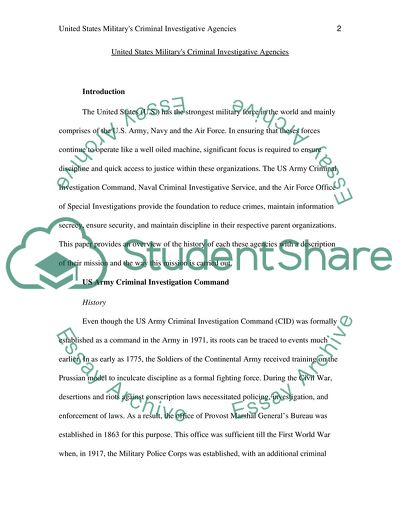Cite this document
(Military's Criminal Investigative Agencies in the U.S.A Term Paper, n.d.)
Military's Criminal Investigative Agencies in the U.S.A Term Paper. https://studentshare.org/military/1739873-the-history-and-mission-of-the-united-states-militarys-criminal-investigative-agencies
Military's Criminal Investigative Agencies in the U.S.A Term Paper. https://studentshare.org/military/1739873-the-history-and-mission-of-the-united-states-militarys-criminal-investigative-agencies
(Military'S Criminal Investigative Agencies in the U.S.A Term Paper)
Military'S Criminal Investigative Agencies in the U.S.A Term Paper. https://studentshare.org/military/1739873-the-history-and-mission-of-the-united-states-militarys-criminal-investigative-agencies.
Military'S Criminal Investigative Agencies in the U.S.A Term Paper. https://studentshare.org/military/1739873-the-history-and-mission-of-the-united-states-militarys-criminal-investigative-agencies.
“Military'S Criminal Investigative Agencies in the U.S.A Term Paper”. https://studentshare.org/military/1739873-the-history-and-mission-of-the-united-states-militarys-criminal-investigative-agencies.


